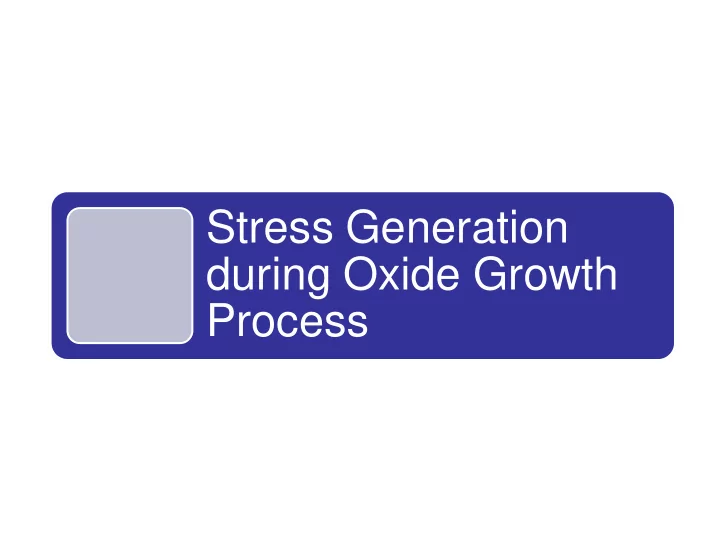

Stress Generation during Oxide Growth Process
The various factors responsible for the accumulation of stress Difference in the molar volumes of metal and the oxide scale formed on it, Pilling Bedworth Ratio (PBR) Epitaxial stresses Mode of diffusing species Geometry of the sample Composition of the scale Differences in the thermal expansion coefficients of oxide and the metal.
Stress accumulation in the growing oxide scale with time.
Maximum oxide thickness sustained before failure on cylinders of various diameters at different exposure temperatures.
a) Shear fracture during cationic oxidation on convex surfaces, and (b) decohesion during cationic oxidation on convex surfaces.
(a) Decohesion during anionic oxidation Oxidation of tubular specimens of (b) on convex surfaces, and (b) tensile tantalum at 825?C. cracking during anionic oxidation on convex surfaces.
Measurement of Stresses Stony’S Equation E – Young’s modulus of metal t – thickness of the strip d – thickness of oxide r – radius of curvature
Schematic diagram of apparatus used in the bending method.
A schematic diagram of the apparatus used for bending with inert gas protection of one side.
Spiral contractometer apparatus for stress measurement.
(a) Heating scheme and various acoustic emission parameters, (b) AE counts vs time, (c) AE event vs time, and (d) voltage level vs time, observed during oxidation of 21/4 Cr-1Mo steel at 900?C.
Schematic of the experimental set up for time domain parameter measurement .
Frequency spectrum of signal during (a) prebreakaway, (b) breakaway, and (c) internal cracking of oxide layer during post-oxidation cooling of 21/4 Cr-1Mo steel.
Recommend
More recommend